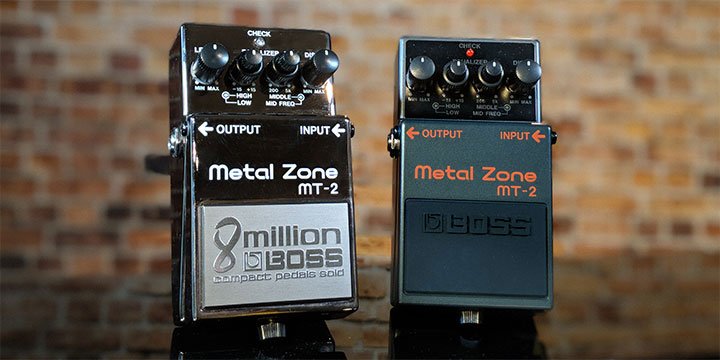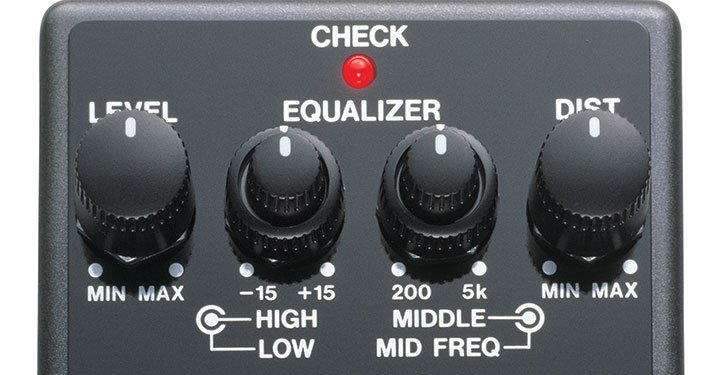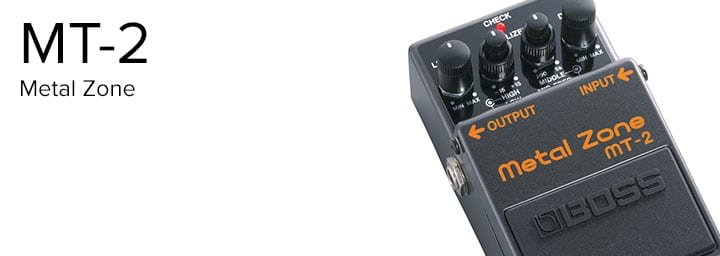It’s funny – everyone has an opinion on the trusty ol’ Metal Zone. And we think we know why – it’s because almost everyone has owned one at some point since its release all the way back in 1991 (yes, your first year MT-2 is almost vintage now!).

Now you might be thinking – what can you say about the Metal Zone that hasn’t been said before?
Well, it’s pretty simple really – you’ve probably been using the MT-2 wrong.
Big call, I know. But bear with me, and let me see if I can convince you…
Contributed by Ed Lim for the Roland Australia Blog
Don’t dime the gain!
We’ve all made that mistake. As a 15 year old playing an MT-2 into a broken stereo, cranking the gain all the way instantly gave me that feeling of playing into a raging, fire-breathing wall of stacks. Which, undeniably, is awesome.
But also, when you do that (not just with the MT-2 but with any high gain amp or pedal) you just lose all sense of definition and clarity in your tone. That’s not ideal.
So – don’t dime the gain. Don’t even go past 12 o’clock if you ask me. There’s SO much gain on tap that you really don’t need all of it on at once.
Try the MT-2 with the Distortion sitting around 10 o’clock. You’ll find yourself in punk/hardcore territory, with aggressive crunchy distortion.
Get closer to the 12 o’clock mark and you should be rewarded with thick, high-gain goodness, while still retaining a good amount of note definition. Don’t worry, there’s still plenty of juice to help those pinch harmonics fly off the strings!
Here’s a really great video which uses the MT-2 to transform a clean AC-30 into a riff monster! You’ll notice that neither the rhythm nor lead tone settings use Distortion over 12 o’clock.
Friends don’t let friends scoop the mids
Once again to use your 15 year old self as an example – as a young metalhead, your first response upon getting an MT-2 is probably to give the mid frequencies a big ol’ scoop (after maxing out the gain, of course!).
It’s a perfectly natural first instinct – you’ve just heard Master of Puppets, it sounds awesome, and you’ve seen the famous V-shaped graphic EQ that was used to get that signature tone. Makes sense to try and do the same with your new metal pedal.
Here’s the rub – your guitar may sound mighty and huge when you’re playing on your own, but the moment the band kicks in, to your dismay, it’s swallowed whole by the mix and you can’t hear a thing.
So why isn’t it a good idea to scoop the mids with your MT-2?
There are a couple of reasons, and here’s the short version:
- Guitar is a mid-focused instrument. That’s where it lives, so if you completely dial the mids out of your tone, it’s no surprise that it disappears.
- On the record, you can get away with more scooped tones because the engineers can EQ it such that all instruments have their own place in the mix (so the guitars don’t get drowned out). You’ll have a tough time doing that live so it’s best not to cut yourself out of the mix before you’ve even started playing!
With powerful EQ comes great responsibility
The EQ controls on the MT-2 are extremely powerful – each of the High, Mid and Low knobs gives you the ability to boost or cut a whopping 15dB, while the Mid Freq knob (which lets you control the frequency that’s affected by the Mid knob) has a very wide range of 200Hz to 5kHz!

What exactly does this mean?
Basically, you have a huge amount of control over how you want to sculpt your tone – sculpt being the key word! We don’t want to hack out a huge hole out of the mid frequencies (see previous section) or boost the living daylights out of the highs or lows.
Try setting all the EQ controls at 12 o’clock for starters. Adjust the High and Low controls to taste to get a baseline for how you want your tone to sound. Remember – be subtle! Since the EQ controls are so powerful, small changes make a big difference.
Let your ears guide you on the mids – try maxing out the Mid setting (this is going somewhere, promise!) and rotate the Mid Freq knob while chugging on the lowest string of your guitar until you find that nasal frequency that just does not sound awesome. Then, turn the tables and apply a slight CUT to the Mid setting, eliminating the worst of those pesky frequencies!
A little boost to the upper mids can help bring you forward in the mix, or, a surgical cut to the lower mids might help tighten up your sound and reduce muddiness – experimentation is your friend here. Don’t forget to note down the settings that work well with your rig!
It’s more versatile than you think
Despite what it says on the tin, the Metal Zone can do more than just metal. Here’s an MT-2 doing a very credible instrumental lead tone… just listen to it, For The Love of God!
With a bit of creative EQ and lower gain, you might find yourself surprised once again – here’s the Metal Zone doing some blues!
So next time you head to a jam to discover that you left your Blues Driver at home by mistake, don’t fret – that spare MT-2 that everyone has can get you through!
And because of the extremely powerful EQ range, you can totally use it on bass to get a downright nasty (in a great way!) chunking, grinding metal bass tone.
In summary
It might seem counterintuitive for a full on metal pedal, but at the end of the day, the secret to working an MT-2 is… subtlety. Experiment with small changes to the EQ to find your sound, and don’t be afraid of dialling the gain down. Keep on keeping on, in the Metal Zone! \m/
Related Articles
CAN I USE GUITAR PEDALS ON BASS?
HOW TO USE THE BOSS NS-2 NOISE SUPPRESSOR IN YOUR RIG




